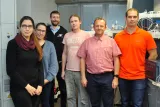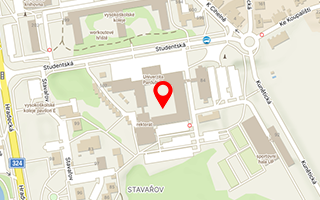Published: 13.10.2025
Researchers from the University of Pardubice are part of a research team that has proposed best practices for statistical processing and visualization of data obtained by lipid analysis. The paper, co-authored by analytical chemists from Prof. Michal Holčapek's team at the Faculty of Chemical Technology of the University of Pardubice, summarizes best practices and tools in programming languages for statistical processing and data visualization. It has been published this week in the prestigious Nature Communications journal.
A multidisciplinary team of researchers in the fields of lipidomics, metabolomics, programming, and statistical analysis has prepared an extensive review article summarizing procedures and tools in the R and Python programming languages. Mass spectrometry-based lipidomics and metabolomics are currently among the fastest growing “omics” technologies. Their use provides key biological insights and generates large data sets. However, this requires robust statistical analysis and visualization. The lack of experts capable of processing data effectively constitutes a significant barrier to fully exploiting the potential of these methods.
“What I originally wanted is that my doctoral student Jakub Idkowiak simply summarizes the R scripts he used for data visualization so that other members of my team could use them. Thanks to Jakub's initiative, this original idea gradually expanded, resulting in this review article, which was co-authored by 20 authors from 19 institutions in 5 countries," said Prof. Michal Holčapek of the Faculty of Chemical Technology at the University of Pardubice.
Drawing on numerous discussions at conferences and peer review experience, the authors realized there was a need for a comprehensive and easy-to-understand overview of available tools. Their proposal provides scientists with varying expertise with access to tested, robust, and user-friendly solutions that are currently scattered across different platforms.
The outputs also include the GitBook repository, which contains an extensive database of codes for data visualization and statistical processing, including instructions for their use: Omics Data Visualization in R and Python.
This project is a response to growing demand from the professional community. At international conferences on lipidomics and metabolomics, the most popular sessions include trainings and lectures on the use of R for statistical processing and data visualization, which generate a lot of interest and interaction on social media.
Prof. Holčapek's research team has been analyzing lipids for more than twenty years, and this is already the fifth publication in Nature Communications in the last five years. A group of analytical chemists from the University of Pardubice made it into the global scientific community for the first time with a commentary describing problems in reporting lipidomic data from another publication. The second published work was the discovery of a method based on lipid analysis for detecting pancreatic cancer only from blood. According to the Web of Science, this discovery by analytical chemists, published in 2022, is among the top 1% most cited articles in the field of biology and biochemistry. The university got a European patent to protect the method, and Lipidica, the university’s joint venture, is now conducting clinical trials.
Pardubice, 1 October 2025
Mgr. Martina Macková
Head of the Promotion and External Affairs Unit of the University of Pardubice


